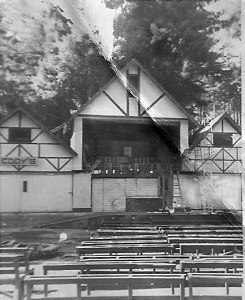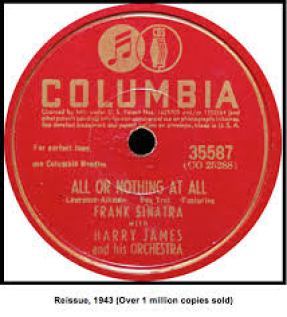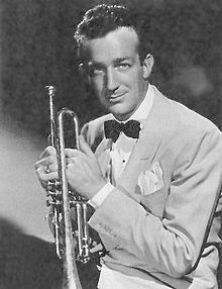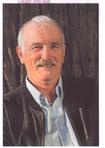John Michael McCarty's Blog, page 16
June 10, 2016
Bohemian Club of San Francisco
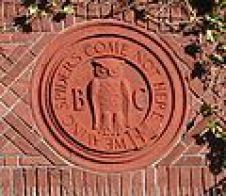
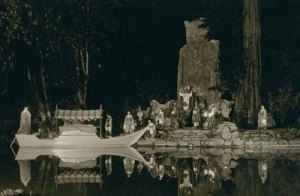 The Bohemian Club of San Francisco started in 1872 in the back offices of the Chronicle. The journalists added artists and musicians to the mix and would meet regularly nearby. However, William Randolph Hearst soon realized that the boys were spending more time at the “club” than at the office. To appease their boss, higher-ups such as corporate types and local military officers were included. Since 1893, their summer retreats have been held at the present location in the redwood hills of Monte Rio along the Russian River.
The Bohemian Club of San Francisco started in 1872 in the back offices of the Chronicle. The journalists added artists and musicians to the mix and would meet regularly nearby. However, William Randolph Hearst soon realized that the boys were spending more time at the “club” than at the office. To appease their boss, higher-ups such as corporate types and local military officers were included. Since 1893, their summer retreats have been held at the present location in the redwood hills of Monte Rio along the Russian River.
Bohemian Grove:
During the early years, access to the Bohemian Grove was by train, which entered the compound via a trestle over the Russian River near the present day ninth tee at Northwood Golf Course (I have in my possession an old railroad spike that was found along the fifth fairway). This bridge was washed out in a flood around 1910. Supposedly, every ex-Republican President since 1893 has attended the Grove. The July encampment starts off with a Cremation of Care ceremony. A plaque above the front entrance to the S.F. building says: “Weaving Spiders Come Not Here”, implying that all business deals be left outside.
The opening night’s celebration involves the poling across an artificial lake of a small boat containing a child-size bundle (called “Dull Care”). Dark, hooded figures receive this effigy from the ferryman and place it on an altar. Warnings of impending evils screech from a forty-foot owl (in yesteryear, the owl’s voice was Walter Cronkite) and soon thereafter the bundle is set on fire. Claims of paganism and conspiracy theories eventually followed. The devil must have made them do it.
The post Bohemian Club of San Francisco appeared first on John McCarty.
June 6, 2016
Korbel Champagne Cellars
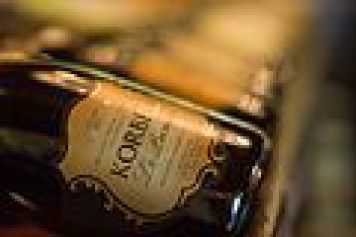
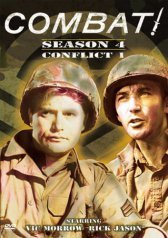 Korbel Champagne Cellars was bought in 1954 by Adolf Heck. The previous four years he had been president of Italian Swiss Colony Winery. Under Heck’s leadership, Swiss Colony developed one of the most successful marketing campaigns in the history of spirits, using “the little old winemaker, me” tagline for its advertisements. After four years at the helm, Heck had transformed Swiss Colony into the largest American winery before moving over to Korbel. There he continued his winning ways, thinking of creative promotional stunts for the bubbly. One such venture served dual purposes when he hooked up with the producers of the 1962 T.V. series, Combat!, starring Vic Marrow.
Korbel Champagne Cellars was bought in 1954 by Adolf Heck. The previous four years he had been president of Italian Swiss Colony Winery. Under Heck’s leadership, Swiss Colony developed one of the most successful marketing campaigns in the history of spirits, using “the little old winemaker, me” tagline for its advertisements. After four years at the helm, Heck had transformed Swiss Colony into the largest American winery before moving over to Korbel. There he continued his winning ways, thinking of creative promotional stunts for the bubbly. One such venture served dual purposes when he hooked up with the producers of the 1962 T.V. series, Combat!, starring Vic Marrow.
Korbel:
Adolf Heck was in need of additional space for vineyards. Much of the Korbel land was left over from when the area was a thriving lumber company back in the 1880’s. Redwood stumps poked up thru the ground like a pimpled-face teenager. To resolve this problem, he sought out and suggested to the people from ABC to shoot their WWII fighting scenes on the property. On one condition–Combat! had to use live ammunition. Thus, Heck not only acquired free publicity but cleared his land of those nasty stumps. The gimmick worked and the winery continued to break records, topping out in 1999 with 1.6 million cases sold. But that was the year of the Y2K fear of computer meltdowns and terrorist attacks. One after another, hotels and restaurants cancelled New Year’s celebrations. It took two years for Korbel to recover. Since then, he has passed the torch onto his son, Gary, and Korbel continues to do the Russian River Valley proud.
The post Korbel Champagne Cellars appeared first on John McCarty.
June 4, 2016
Korbel Champagne Cellars
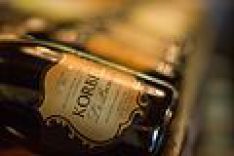
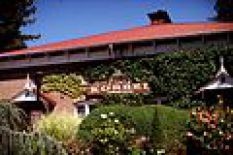 Korbel Champagne Cellars started off with a bang–literally. According to family lore, Francis Korbel was in Prague in 1848 and fired the shot that started a revolution against the monarch of the Austrian Empire. The young Korbel landed in Daliborka Prison. He managed to escape, however, reportedly with the help of his grandmother who provided civilian clothes that allowed him to stroll out an unlocked gate to freedom, casually smoking a cigar. He soon fled to New York City and then to San Francisco.
Korbel Champagne Cellars started off with a bang–literally. According to family lore, Francis Korbel was in Prague in 1848 and fired the shot that started a revolution against the monarch of the Austrian Empire. The young Korbel landed in Daliborka Prison. He managed to escape, however, reportedly with the help of his grandmother who provided civilian clothes that allowed him to stroll out an unlocked gate to freedom, casually smoking a cigar. He soon fled to New York City and then to San Francisco.
Korbel:
Francis was joined by his brother Anton, a renowned forger. Together, they formed the first cigar box factory in San Francisco. Once again the siblings took to the road after some questionable business dealings and several threats upon their safety. They came to rural Sonoma County, built two sawmills, purchased a schooner named Bohemia, and started supplying the Bay Area with lumber. When the building boom subsided, however, they found themselves holding a lot of timber for which there was little demand. Being the resourceful types that they were, the Korbel brothers began to grow alfalfa, beets, corn, prunes, using some of the crops to feed cows and start a dairy. The boys also began to plant vineyards along the banks of the lower Russian River. By the end of the 19th century, Korbel Champagne Cellars had won several blue ribbons for their bubbly. And the rest, as they say, is history. Who says crime doesn’t pay?
The post Korbel Champagne Cellars appeared first on John McCarty.
May 25, 2016
Freight Trains from Occidental to S.F., 1915
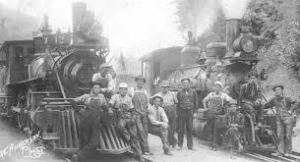 Freight trains in 1915 would normally leave Occidental in rural Sonoma County around 7:30 a.m. for the ferry terminal at Sausalito and return late afternoon. While timber had been the main cargo for the previous three decades, greed reduced the redwoods to 5% of their original growth. The final knockout was the Russian River fire of September 17, 1923, which burnt everything from Guerneville to the Pacific Ocean. With this calamity, there was a shift in merchandise.
Freight trains in 1915 would normally leave Occidental in rural Sonoma County around 7:30 a.m. for the ferry terminal at Sausalito and return late afternoon. While timber had been the main cargo for the previous three decades, greed reduced the redwoods to 5% of their original growth. The final knockout was the Russian River fire of September 17, 1923, which burnt everything from Guerneville to the Pacific Ocean. With this calamity, there was a shift in merchandise.
Freight Trains after Timber:
In addition to the caboose, the locomotive would pull a coach for delivering and returning children from schools in the western part of the county. Twenty freight cars carried wine from Occidental, herring from Bodega, potatoes from Freestone, grain and milk from Fallon, oysters from Marshall, and cattle and hogs from Valley Ford. The rural businesses along the line (North Coast R.R., then North Pacific Coast R.R., then Northwestern Pacific R.R.), however, could not support the railroad. With the auto and truck creeping in, the end of the narrow gauge was just ahead. Scheduled freight was reduced and mixed with passenger cars until ceasing altogether in 1927. But if you listen carefully late at night, you can still hear the whistle from old engine No. 91.
The post Freight Trains from Occidental to S.F., 1915 appeared first on John McCarty.
May 22, 2016
Railroad Misadventures along the Russian River of Old
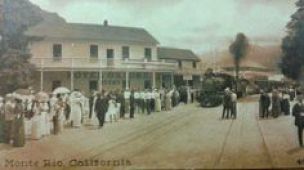 There were plenty of railroad misadventures along the banks of the Russian River of old. The first wreck of the Fulton and Guerneville Line (an offshoot of the SF & NP R.R.) was in 1898. While a locomotive was switching over to the turntable in Guerneville, it gave a nudge to a string of flats. The brakes bled and the cars started off on the slight downgrade to Guernewood Park. At the same moment, the Bully Boy was coming from Mission Gulch (present day Old Cazadero Rd.) with six loads of logs. On the curve (where Old Caz Rd & Hwy. 116 meet), a head-on crash sent Bully Boy airborne.
There were plenty of railroad misadventures along the banks of the Russian River of old. The first wreck of the Fulton and Guerneville Line (an offshoot of the SF & NP R.R.) was in 1898. While a locomotive was switching over to the turntable in Guerneville, it gave a nudge to a string of flats. The brakes bled and the cars started off on the slight downgrade to Guernewood Park. At the same moment, the Bully Boy was coming from Mission Gulch (present day Old Cazadero Rd.) with six loads of logs. On the curve (where Old Caz Rd & Hwy. 116 meet), a head-on crash sent Bully Boy airborne.
Railroad Misadventures (cont):
Bully Boy did a three-sixty and landed right side up. The locomotive was crippled but no lives were lost. That is one acrobatic engine!
In another incident, the heavy rains of 1920 washed away much of the line just past Mesa Grande (now Villa Grande) along present-day Moscow Road. All attempts failed to clear the tracks. From Sausalito, the Northwestern Pacific sent a hydraulic pump and a heavy duty locomotive with 200 pounds of steam pressure. The beast traveled at just 10 mph but still managed to break 15 rails. Upon its arrival, another storm hit the area, creating another slide which flipped over the engine and the steam shovel operator. A fellow worker waded through the soup, latched onto the ankle of his buddy and pulled him back up to daylight. The operator suddenly came back from the dead and nearly bit off his rescuer’s hand who was clearing debris from the victim’s mouth. Mother Nature won out for the rest of that winter as passengers would have to dismount the train on one side of the slide, walk around and board another car for the remainder of their trip to Duncan Mills and beyond. A hardy bunch for sure.
Thanks to Fred Stindt, author of Trains to the Russian River.
The post Railroad Misadventures along the Russian River of Old appeared first on John McCarty.
May 18, 2016
All Aboard the Northwestern Pacific R.R.
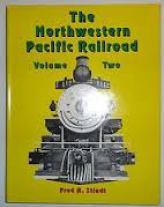
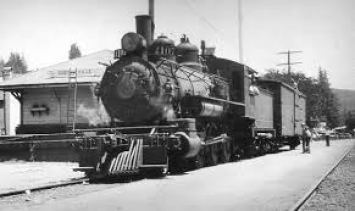 “All Aboard for the Russian River” was a familiar call back in the day. It must have been a thrilling sight when the Northwestern Pacific R.R. pulled into Guerneville along the Russian River. The route began in 1876 and reached its peek in 1926 with 14,000 passengers on a summer weekend (30,000 on 4th of July). After paying your round-trip fare of $1.25, you would board a ferry at the foot of Market Street in San Francisco for Sausalito. From there you might do the “Triangle Trip”.
“All Aboard for the Russian River” was a familiar call back in the day. It must have been a thrilling sight when the Northwestern Pacific R.R. pulled into Guerneville along the Russian River. The route began in 1876 and reached its peek in 1926 with 14,000 passengers on a summer weekend (30,000 on 4th of July). After paying your round-trip fare of $1.25, you would board a ferry at the foot of Market Street in San Francisco for Sausalito. From there you might do the “Triangle Trip”.
Northwestern Pacific R.R. to the Russian River:
The Northwestern Pacific R.R. would provide a first class smoker coach or perhaps a second class car where you might not mind a few non-smokers in attendance. In addition, the passenger train would haul a baggage and mail car, a picnic car, a hunter’s car (where the unpleasant aromas of fresh kills could fester) and a caboose. It might be No. 13 (a 4-6-0 engine capable of handling 13 cars), that would take you on your five-hour journey thru San Anselmo to the coast and Pt. Reyes and Valley Ford. From there you would cut inland to Freestone and cross the largest man-made structure west of the Mississippi–the Brown Canyon Trestle that stood over two hundred and fifty feet tall and over five hundred feet long. After leaving Howard’s Station (now Occidental), you’d traverse Dutch Bill Creek and go through a tunnel (above where the fish ladder is today) and enter Monte Rio and the Russian River. Next you would travel down present day Moscow Rd to Duncan Mills and Cazadero.
The weekend provided sunbathing along the banks of the Russian River while at night you could swing to the music of the Big Bands at one of six dance halls. For a little variety, upon your return trip you could continue onto Guerneville, Santa Rosa, Petaluma, San Rafael and finally to Sausalito to catch the ferry back to the City.
During the depression, the business side of the ledger was down to a trickle. The last train out of Guerneville was Thursday, November 14, 1935. Women wept while men took the ceremonial free ride with offerings of unlimited booze on board. It marked the end of an era.
The post All Aboard the Northwestern Pacific R.R. appeared first on John McCarty.
May 12, 2016
Jerry Garcia at the Russian River

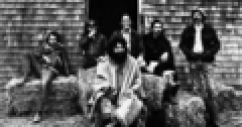 Jerry Garcia and the Grateful Dead played at Rio Nido along the Russian River on September 3, 1967. At the time that was not a long commute for the boys as they owned an eighteen acre commune in Forestville’s Pocket Canyon off of Giovanetti Road. The only glitch was that one of their trailers hit the old road sign upon entering the hamlet and knocked it down, but it has been resurrected for all to admire once again.
Jerry Garcia and the Grateful Dead played at Rio Nido along the Russian River on September 3, 1967. At the time that was not a long commute for the boys as they owned an eighteen acre commune in Forestville’s Pocket Canyon off of Giovanetti Road. The only glitch was that one of their trailers hit the old road sign upon entering the hamlet and knocked it down, but it has been resurrected for all to admire once again.
Jerry Garcia at Rio Nido, September 3,1967:
The concert on September 3, 1967 lasted one and half hours as the group started off with “Dancin’ In the Streets”. Jerry’s guitar sang soft as he weaved Indian, blues, rock and acid into a spiraling of riffs. When the dose started to get too heavy, he settled back into a comfy funk groove and wrapped it up as you stood there in awe. “The Viola Lee” began in typical grungy fashion. Bobby Weir flung little melodies all over the place while Jerry locked into some bluegrass, later switching over to sitar-like flavors. It was a psychedelic monster with scorching Jerry licks and quick staccato punches by Phil Lesh. “The Midnight Hour” rounded out the set in an epic 31 minute version with a rap by Pigpen McKernan. People were on their feet, rockin’ out, riding the rainbow, until things switched up into screeching, molten pools of glorious chaos. A Dead Head moment in our backyard.
Until next time, keep turning those pages, my brother.
http://rionido.net/history/memories-o...
The post Jerry Garcia at the Russian River appeared first on John McCarty.
May 7, 2016
Dick Crest at the Russian River
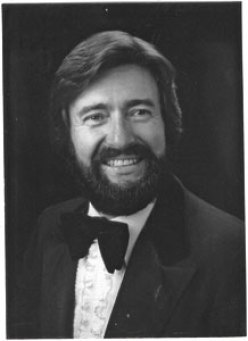 Dick Crest was the pied piper along the banks of the Russian River for 10 summers. Not only did he conduct the Bohemian Club’s Jinx Band, but he also was the resident musician at Rio Nido. During the school year, he taught at James Lick High School in San Jose and later at the College of San Mateo. In addition, he hosted two teen TV shows–“Pepsi Party” on KNTV in San Jose followed by “Rock ‘n’ Rally” on KPIX in San Francisco.
Dick Crest was the pied piper along the banks of the Russian River for 10 summers. Not only did he conduct the Bohemian Club’s Jinx Band, but he also was the resident musician at Rio Nido. During the school year, he taught at James Lick High School in San Jose and later at the College of San Mateo. In addition, he hosted two teen TV shows–“Pepsi Party” on KNTV in San Jose followed by “Rock ‘n’ Rally” on KPIX in San Francisco.
He will best be remembered by all you River Rats for those sweet, pure sounds of yesteryear. I know that the “Sheik of Araby” was covered by the Beatles in 1962, but the tune for many belongs in the dance hall at Rio Nido. You could make the same case for “Show Me the Way to Go Home” and other songs that trumpeted a care-free attitude long gone.
Some River Rats are still in possession of their membership cards with Rivasimacale printed at the top. Of course, you were required not only to carry this I.D. with you twenty-four-seven, but you had to show your large green toenail as well.
Dick Crest:
One River Rat tells the story of how she was honored to carry Dick Crest’s saxophone from the amphitheater to the dance hall where the band would set up their gear once more and play until midnight. Like many, she loved and admired the band leader. One ritual has her and other River Rats, each in turn, swimming out into the Russian River, retrieving a stick and bringing it back to the feet of Dick Crest. You would then bark and wag your I.D. card three times. It was a right of passage that all looked forward to.
When his contract was not renewed for the summer of 1963, many of us felt that the age of innocence was lost forever. Dick Crest passed on to the great arena in the sky in 2010 at the age of 80. It is only fitting that I bid you farewell with Dick Crest’s signature sign-off: “Goodnight Sweetheart Goodnight”.
For more pics and fun reads on the Russian River and San Francisco, go to http://www.johnmccarty.org
The post Dick Crest at the Russian River appeared first on John McCarty.
May 5, 2016
Big Bands at the River
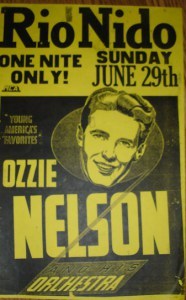
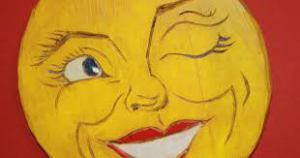 There were Big Bands galore up at the Russian River back in the day. The first was Art Hickman of the Ziegfeld Follies who played at the Palomar Dance Hall on Fitch Mountain in Healdsburg in 1913. But you had other venue choices including the beach ballroom at Mirabel (where Burke’s Canoes is presently), Rio Nido, the Grove in Guerneville, Guernewood Park and Monte Rio. You could listen to the sweet sounds of Harry James, Tommy Dorsey, Woody Herman, Phil Harris, Buddy Rogers, Ted FioRito, Kay Kayser or perhaps Harry Owens and his Royal Hawaiians. The last musical group of this era to play in Rio Nido was Tex Benecke’s Glenn Miller Band in summer of ’53. One of the more popular Big Bands was the Ozzie Nelson Orchestra.
There were Big Bands galore up at the Russian River back in the day. The first was Art Hickman of the Ziegfeld Follies who played at the Palomar Dance Hall on Fitch Mountain in Healdsburg in 1913. But you had other venue choices including the beach ballroom at Mirabel (where Burke’s Canoes is presently), Rio Nido, the Grove in Guerneville, Guernewood Park and Monte Rio. You could listen to the sweet sounds of Harry James, Tommy Dorsey, Woody Herman, Phil Harris, Buddy Rogers, Ted FioRito, Kay Kayser or perhaps Harry Owens and his Royal Hawaiians. The last musical group of this era to play in Rio Nido was Tex Benecke’s Glenn Miller Band in summer of ’53. One of the more popular Big Bands was the Ozzie Nelson Orchestra.
Ozzie Nelson, Big Bands:
Ozzie was the lead vocalist and sang duets with his backup singer, Harriet Hilliard. They had a couple of #1 hits including “Over Somebody Else’s Shoulder” and “And Then Some”. Ozzie’s easy style and Harriet’s perky vocals were a big hit with the summer vacationers along the Russian River. There are still some old folk around who remember when Ozzie and Harriet got hitched back in 1935. But Ozzie’s soft spoken exterior hid a control-freak underneath. He denied college to his two sons, Ricky and David, saying that they had a family obligation to show business. In fact, all would be present for every episode of the future T.V. series, The Adventures of Ozzie and Harriet, which aired from 1952 until 1966.
For more pics and fun reads about the Russian River and/or San Francisco, visit http://www.johnmccarty.org/
The post Big Bands at the River appeared first on John McCarty.
April 30, 2016
Rio Nido & the Big Bands
Rio Nido and the Big Bands of the thirties had a beautiful relationship along the Russian River in west Sonoma County. In a conversation with Claire Harris in 2007 while drafting my first novel, Memories That Linger, he shared with me his excitement as such greats as Harry James (upper right photo) visited the small hamlet. After watching a preview of the band at the amphitheater (upper left photo), you could buy a ticket (75 cents on weekends, 50 cents on a weeknight, or $1.25 for the entire week) and go next door to the dance hall.
Rio Nido & Harry James:
Of course, the patrons all hoped to catch a glimpse of his famous Hollywood wife, Betty Grable. Yowzer, baby! If you couldn’t spot the blond bombshell, you would have to settle for such musical hits as their Top 10 hit of 1941, “You Made Me Love You”. This could be followed by Frank Sinatra (Harry James wanted to name the young crooner Frankie Satin) and “All or Nothing At All” (center photo). It was no secret that drummer Buddy Rich and Frank had a contentious relationship. Rich would try to throw Sinatra “off” by playing the wrong tempo. On one occasion, Sinatra became so fed up with these antics that he stormed off stage and returned with a glass of water, which he unloaded upon the scalp of Rich. It was no surprise when Sinatra left Harry James after just one year to sign with Tommy Dorsey.
www.allposters.com/-st/Harry–James–Posters_c144435_.htm
The post Rio Nido & the Big Bands appeared first on John McCarty.

